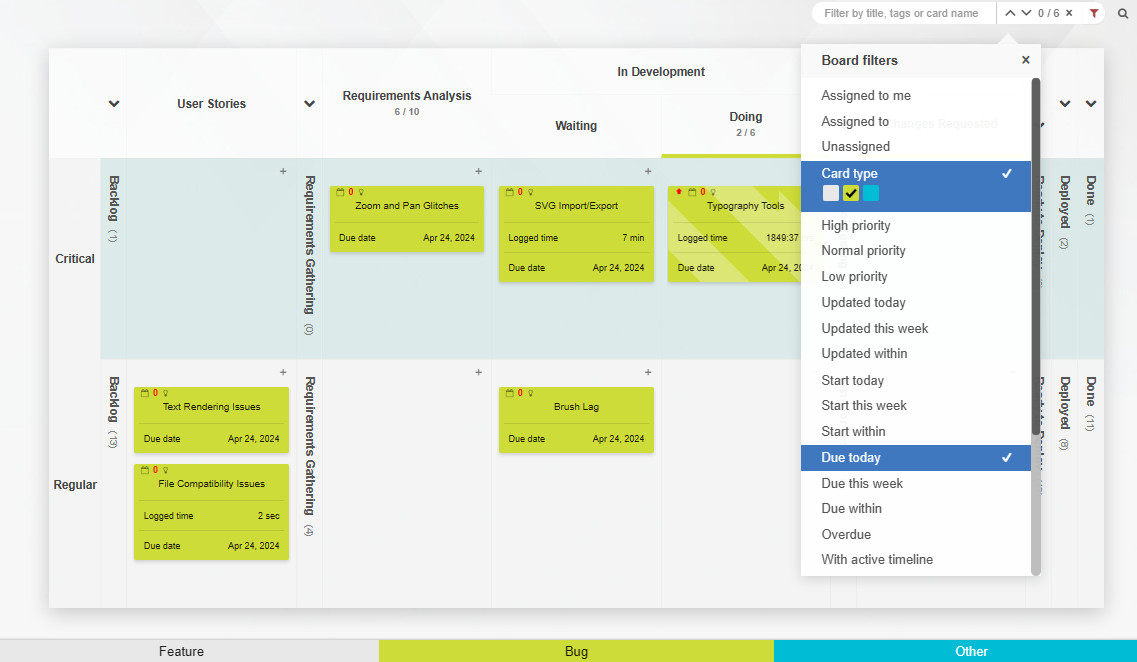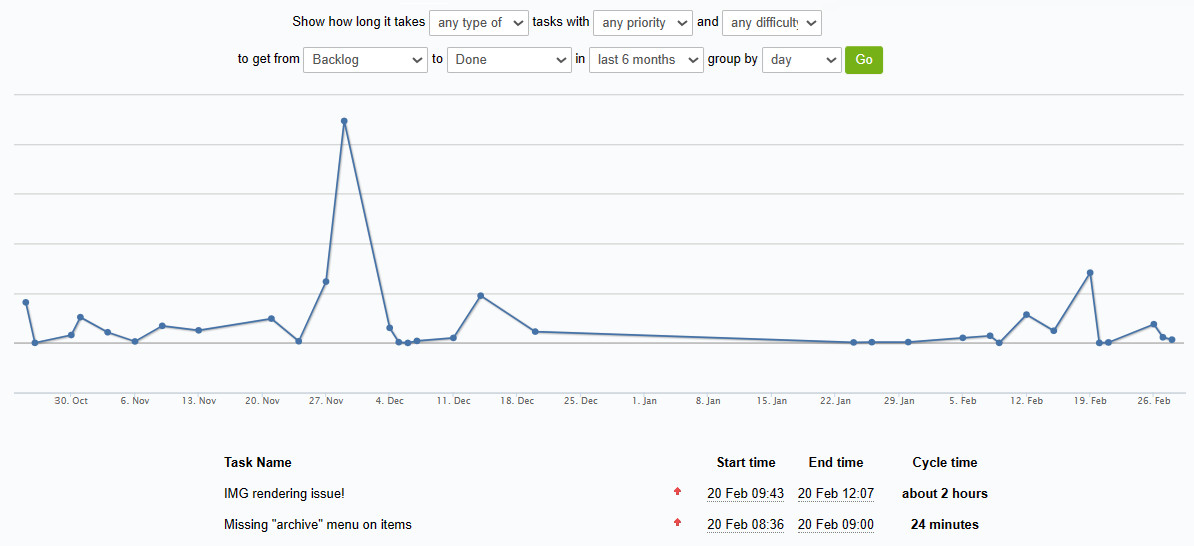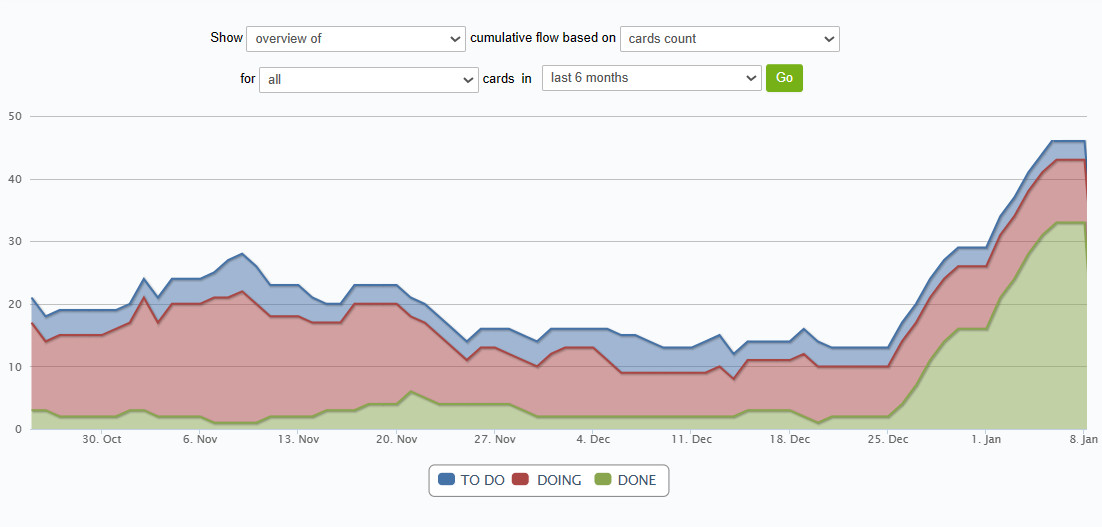Harnessing Kanban Feedback Loops for Continuous Process Excellence24 Apr 2024

Kanban, the visual system for managing work as it moves through a process, is best known for the visual clarity it brings with the sheer simplicity and work-in-progress limits, helping the team zero-in on the one task that matters right now. At the same time it helps to increase their task completion rates while facilitating quality improvement, thanks to the lack of multi-tasking. But moreover, Kanban can also work to monitor and enhance product or service quality through feedback loops. Let’s explore how!
What are feedback loops in the context of Kanban?
In the context of Kanban, feedback loops, sometimes called Kanban cadences, are essential initiators of continuous improvement in processes and operations. They facilitate enhanced productivity, adaptability, and agility within teams by enabling the ongoing exchange of feedback. Unlike traditional lengthy monthly meetings, Kanban feedback loops empower teams to promptly devise action plans, promoting quicker responses to identified improvement areas.
There are three primary varieties of Kanban feedback loops that your organization can adopt
Execution focus: It's a loop that centers on daily tasks and operations, aiming for efficiency. It usually happens as a short standup meeting, lasting around 15 minutes, keeping the participants informed and ready for the day ahead. Team members discuss progress, pinpointing areas that need sorting or improving, and ensure coherence in their objectives.

Process enhancement: This loop targets processes and workflows refinement and aims to increase effectiveness. Regularly conducted reviews and data-fed process metrics work to provide continual feedback on ongoing work, allowing the team to make data-driven, informed decisions and validate their assumptions.

Strategic alignment: This high-level feedback loop, usually done as a project retrospective, assures alignment with overarching organizational objectives, demanding that teams evaluate whether their efforts follow the organization's critical priorities.

Are there any risks when it comes to using feedback loops in Kanban?
Managing feedback within a Kanban-based process has its challenges, as it requires a delicate balance between excessive or insufficient input that may overwhelm or confuse the team or leave them uninformed. Achieving equilibrium between quantity and quality, discerning and filtering out irrelevant or conflicting messages, and validating feedback from multiple sources are vital steps to mitigate risks. Additionally, embracing feedback as a learning opportunity, avoiding personalization, and prioritizing proactive action over resistance or neglect are essential practices to try to adopt.
What are the core benefits of including feedback loops in your Kanban practice?
- Higher flexibility: Timely feedback empowers teams to adjust promptly to evolving requirements.
- Effective quality control: Identifying and addressing issues as and when they happen prevents their escalation.
- Iterative, steady improvement: Teams incorporate feedback on completed work into subsequent iterations, driving continuous product quality and process efficiency improvement.
- Promoting a culture of growth and unity: Teams glean insights from errors to forestall future occurrences, while learning to embrace shared goals and strategies throughout the process.
- Maintaining customer contentment: Ongoing feedback guarantees that deliverables align with client expectations.
Fostering a constructive feedback ethos within your organization is pivotal for ongoing enhancement. By incorporating feedback loops into your Kanban practice, you'll bolster the quality of your product or service and pave the way for success.
Mastering Efficiency – Kanban and Lean Fusion for Seamless Business Operations13 Feb 2024
Tackling business process streamlining can feel overwhelming amidst all the available methods, tools, and advice. But there is an approach that can optimize efficiency without hefty investments or a lengthy timeframe - it's the combination of Lean practices with the Kanban...
Mastering Project Portfolios Through Kanban Board Swimlanes21 Nov 2023
When new teams embrace a Kanban board to visualize and manage their projects, they often witness remarkable results. By embracing tasks in a newly transparent manner and benefitting from the peace of mind that Work in Progress (WIP) limits provide, teams naturally progress towards adopting...
Maximizing Efficiency with Kanban's Time Management Techniques24 Oct 2023
Time is a priceless resource, and its effective management can decide between your success or stress. For users of the Kanban method, time management isn't just a skill - it's a vital element of the methodology. What time management techniques does Kanban offer, and how can they help you make the...
Unplugging for Enhanced Productivity: The Digital Detox05 Oct 2023
Do you ever feel like you're drowning in a sea of notifications, emails, messages, calls, and social media updates constantly fighting for your attention? Is your ability to focus on essential tasks and priorities consistently undermined by the lure of digital distractions and interruptions?...
Single-tasking: The Art of Doing One Thing at a Time13 Sep 2023
Not too long ago, we were all lead to believe that multitasking is a desirable and necessary skill. You'd be expected to handle multiple tasks, projects, and deadlines simultaneously, while staying on top of your phones, emails, meetings and social media. But - according to a growing body of...
The Power of Autonomy: Empowering Individuals to Drive Results05 Sep 2023
In a world of rapid change and innovation, the traditional hierarchical structures of organizations are giving way to a new paradigm - one that emphasizes autonomy and empowerment. Individual autonomy is a force to be reckoned with, as it not only transforms the way businesses operate, but...
Introducing a Start Date Feature to Supercharge Your Workflow21 Aug 2023
Today we've got the fantastic news that's sure to elevate your project management game to a whole new level of efficiency in collaboration. Meet the latest addition to your Kanban Tool card template: the start date! Picture this: you have a project with multiple tasks, each having a set...
Micro-productivity: Maximizing Small Moments for Big Results18 Jul 2023
As the age-old adage goes, Rome wasn't built in a day, but it was undoubtedly constructed, brick by brick, paving the way for monumental achievements. Likewise, the grandest feats in the business world - from ambitious entrepreneurial ventures to collaborative team projects and even personal...
Finding the Balance: Where Productivity and Well-being Habits Meet12 Jul 2023
It's common for highly productive individuals to become so engrossed in their work that they neglect their health and personal lives. The pursuit of success, career advancement, and the constant pressure to achieve more can lead to an imbalance taking a toll on mental and physical well-being....
Get started with Kanban Tool
Sign Up![]() Follow us on Twitter
Follow us on Twitter
![]() Join us at Facebook
Join us at Facebook
![]() Follow us on LinkedIn
Follow us on LinkedIn
![]() Subscribe via RSS
Subscribe via RSS